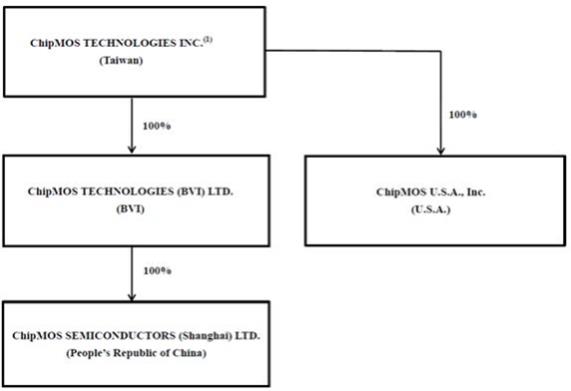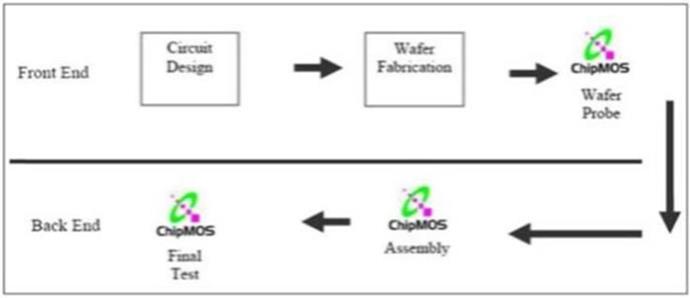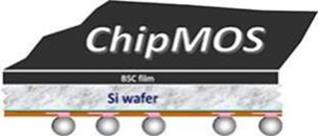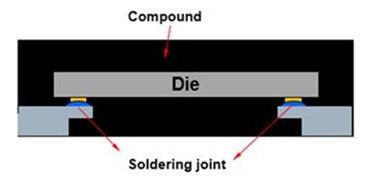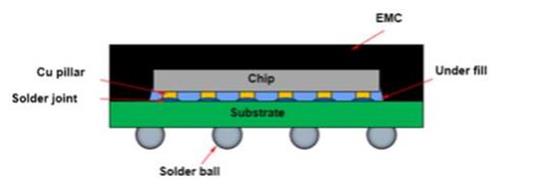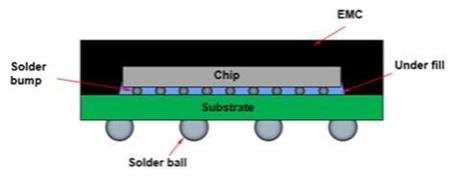Gain on Disposal of Investment Accounted for Using Equity Method. Gain on disposal of investment accounted for using equity method decreased by NT$974 million, or 100%, to nil in 2020 from NT$974 million in 2019. The change was due to the disposal of 9,100,000 common shares of JMC in April 2019.
Profit before Income Tax. As a result of the foregoing, profit before income tax decreased by 2% to NT$2,973 million (US$106 million) in 2020 from NT$3,022 million in 2019.
Income Tax Expense. We had an income tax expense of NT$594 million (US$21 million) in 2020 compared to income tax expense of NT$514 million for 2019, primarily due to the profit before income tax for 2019 after deducted from the gain on disposal of JMC equity (for tax-free transactions) is lower than 2020.
Profit for the Year Attributable to Equity Holders of the Company. As a result of the foregoing operations, the profit for the year attributable to the Company was NT$2,379 million (US$85 million) in 2020, compared to NT$2,509 million in 2019.
Year Ended December 31, 2019 Compared to Year Ended December 31, 2018
Revenue. Our revenue increased by NT$1,858 million, or 10%, to NT$20,338 million in 2019 from NT$18,480 million in 2018.
Revenue from testing services decreased by NT$532 million, or 11%, to NT$4,258 million in 2019 from NT$4,790 million in 2018, principally due to the decreased average selling prices for our services.
Revenue from assembly services increased by NT$470 million, or 10%, to NT$5,149 million in 2019 from NT$4,679 million in 2018, primarily as a result of the increased customer demand.
Revenue from LCD, OLED and other display panel driver semiconductor assembly and testing services increased by NT$1,227 million, or 22%, to NT$6,922 million in 2019 from NT$5,695 million in 2018. This increase was principally as a result of an increase in average selling prices for our services and customer demand for LCD, OLED and other display panel products.
Revenue from bumping services increased by NT$693 million, or 21%, to NT$4,009 million in 2019 from NT$3,316 million in 2018. This increase was principally due to the increased average selling prices for our services.
See “— Cost of Revenue and Gross Profit” for more information concerning our assembly and testing capacity utilization rates and the impact on our revenue, gross profit and profitability from any increases or decreases in our capacity utilization rate.
Cost of Revenue and Gross Profit. Cost of revenue increased by NT$1,362 million, or 9%, to NT$16,412 million in 2019 from NT$15,050 million in 2018, primarily due to the increase of direct material expense, depreciation expenses, direct labor expenses, employee benefit expenses and inventory supplies of NT$495 million, NT$348 million, NT$221 million, NT$132 million and NT$102 million, respectively.
Our gross profit increased to NT$3,926 million in 2019 from NT$3,430 million in 2018. Our gross margin was 19.3% in 2019, compared to 18.6% in 2018.
Our gross profit margin for testing services decreased to 24.3% in 2019 from 33.7% in 2018, primarily due to the decrease in revenue resulted from the decreased average selling prices for our services.
Our gross profit margin for assembly services increased to 3.3% in 2019 from 3.2% in 2018, primarily due to the increase in revenue resulted from the increased customer demand.
Our gross profit margin for LCD, OLED and other display panel driver semiconductor assembly and testing services increased to 30.8% in 2019 from 27.2% in 2018, primarily due to the increase in revenue resulted from the increased average selling prices for our services and customer demand.
Our gross profit margin for bumping services increased to 14.6% in 2019 from 3.7% in 2018, primarily due to the increase in revenue resulted from the increased average selling prices for our services.
Sales and Marketing Expenses. Sales and marketing expenses increased by NT$3 million, or 6%, to NT$56 million in 2019 from NT$53 million in 2018, primarily due to the increase of employee benefit expenses.
51
